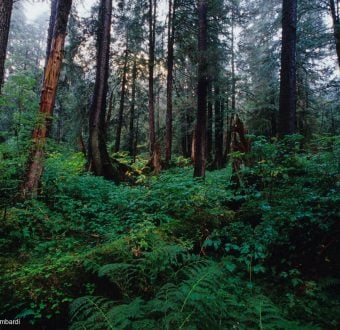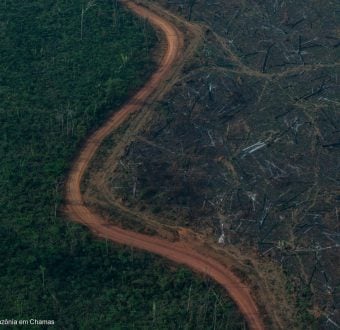The new study, entitled ‘Fuelling a BioMess’, contradicts industry assertions that this kind of ‘biomass’ fuel is clean and carbon neutral. The science behind the report shows how using forests for energy can be worse for the climate than burning coal.
The US is set to overtake Canada as the world’s biggest exporter of wood pellets, which are used in power plants and burnt instead of fossil fuels.
“Using forests to produce energy is like pouring gasoline to put out a fire” said Larry Edwards, a Greenpeace-US forest campaigner. “Science shows that it can take decades for new trees to absorb the carbon that escapes when we burn timber from existing forests.”
Using peer-reviewed scientific literature and focusing on the Canadian market, the report shows how the amount of wood being burnt in power plants or turned into liquid fuels is growing fast. U.S. wood pellet exports were negligible before 2008, but the country will soon eclipse Canada as the world’s biggest exporter. Exports to European power plants from southeastern U.S. ports alone are expected to reach 4.6 million tons in two years.
“Wood biomass isn’t the silver bullet that the industry would have us believe,” continued Edwards “To deliver truly green growth and new jobs we need to invest in renewable energy and make better use of our resources, not burn trees to fuel an already wasteful economy. ”
The demand for biomass now exceeds the supply from traditional sources like bark, sawdust and other residues from pulp and paper plants or sawmills. As a result, wood biomass increasingly comes from actual forests, including standing trees, naturally disturbed forests and logging debris that, along with its nutrients, was traditionally left in the forest.
The Greenpeace report recommends that:
* Using woody biomass for energy production should be restricted to a local, small-scale use of mill residues
* Approval of new wood-based bioenergy projects should cease, pending public hearings, a full accounting of the life-cycle climate and biodiversity footprints, and a re-thinking of government policies.
The report describes how in 2009 Canada released more greenhouse gas emissions from the production and use of bioenergy than from every car on Canadian roads.
“We’ve got a decade or two to get a grip on greenhouse emissions, and biomass won’t help because it will take far longer than that to repair the damage we’re doing by cutting down forests in the here and now.” commented Edwards
Grrenpeace’s report comes on the eve of the opening of Europe’s first commodity exchange for trading energy biomass, operated by APX-ENDEX in Amsterdam.
ENDS
Notes:
Read the full report here: www.greenpeace.ca/bioMESS
High resolution photos available at www.greenpeace.ca/gallery
For more information, please contact:
James Turner, Media Officer, Greenpeace USA, 415-812-1142
Larry Edwards, Forest Campaigner, Greenpeace US, 907-747-7557

